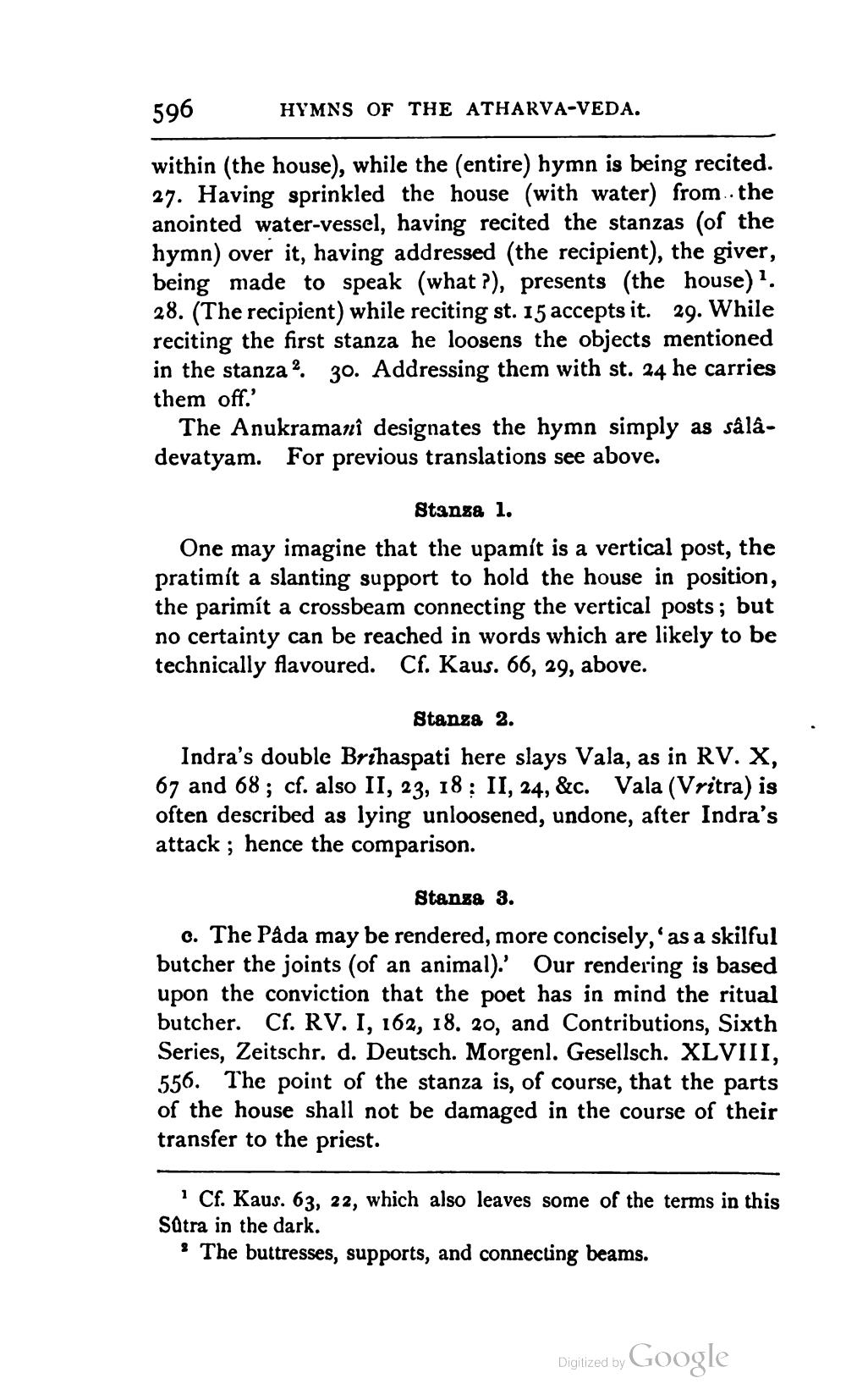________________
596
HYMNS OF THE ATHARVA-VEDA.
within (the house), while the (entire) hymn is being recited. 27. Having sprinkled the house (with water) from the anointed water-vessel, having recited the stanzas (of the hymn) over it, having addressed (the recipient), the giver, being made to speak (what?), presents (the house). 28. (The recipient) while reciting st. 15 accepts it. 29. While reciting the first stanza he loosens the objects mentioned in the stanza?. 30. Addressing them with st. 24 he carries them off.'
The Anukramanî designates the hymn simply as sålàdevatyam. For previous translations see above.
Stansa 1.
One may imagine that the upamít is a vertical post, the pratimit a slanting support to hold the house in position, the parimít a crossbeam connecting the vertical posts; but no certainty can be reached in words which are likely to be technically flavoured. Cf. Kaus. 66, 29, above.
Stanza 2. Indra's double Brihaspati here slays Vala, as in RV. X, 67 and 68; cf. also II, 23, 18: II, 24, &c. Vala (Vritra) is often described as lying unloosened, undone, after Indra's attack; hence the comparison.
Stanza 3. o. The Påda may be rendered, more concisely, as a skilful butcher the joints (of an animal). Our rendering is based upon the conviction that the poet has in mind the ritual butcher. Cf. RV. I, 162, 18, 20, and Contributions, Sixth Series, Zeitschr. d. Deutsch. Morgenl. Gesellsch. XLVIII, 556. The point of the stanza is, of course, that the parts of the house shall not be damaged in the course of their transfer to the priest.
* Cf. Kaus. 63, 22, which also leaves some of the terms in this Sotra in the dark.
* The buttresses, supports, and connecting beams.
Digitized by Google




